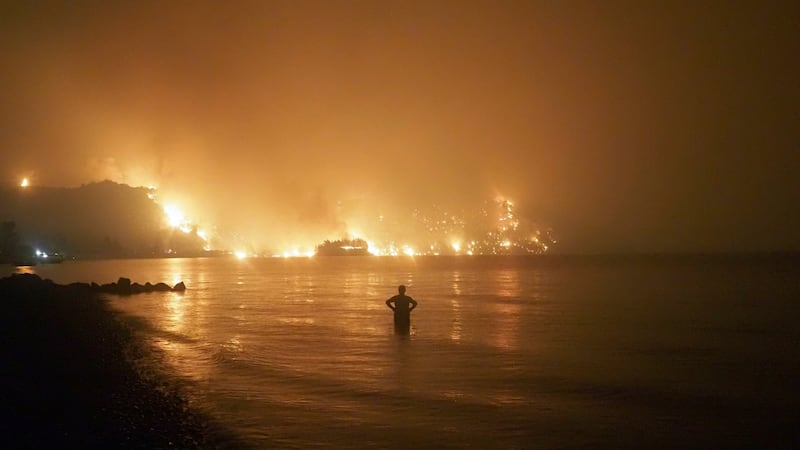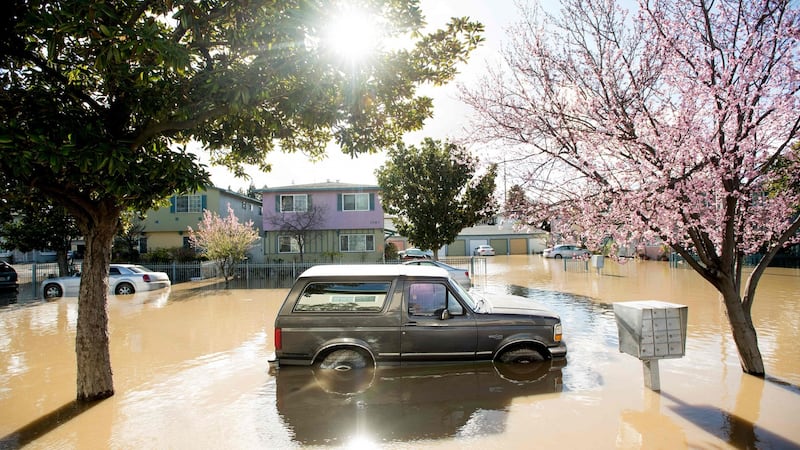Over the past fortnight, hundreds of independent climate scientists commissioned by the UN Intergovernmental Panel on Climate Change (IPCC) – and representing 195 member countries – finalised the most comprehensive assessment yet of the physical science behind a warming planet, and to what extent human activity is fuelling that overheating through carbon emissions.
The report by the scientists known as Working Group 1 leaves little to doubt. The indications on what is happening now, and what is likely, have never been clearer. Remarkably, in spite of this, the shape of that future is still in our hands. We can still determine our fate and minimise the inevitable consequences. But the time to do it is perilously short.
What is the climate science indicating right now compared to 30 years ago?

There is more certainty on the imminent consequences. The first IPCC report, released in 1990, concluded human-caused climate change would soon become evident, but could not yet confirm it was already happening.
Today, evidence is overwhelming. The climate has indeed changed since the pre-industrial era and human activities are the principal cause of that change.
With much more data and better models, we also understand more about how the atmosphere interacts with the ocean, ice, snow, ecosystems and land surfaces of the Earth.
Computer climate simulations have also improved dramatically, incorporating many more natural processes and providing projections at much higher resolutions – thereby increasing the confidence in predictions.
Where is climate disruption most apparent?
The high northern latitudes show the largest temperature increases with clear effects on sea ice and glaciers. The warming in the tropical regions is also apparent though the natural year-to-year variations in temperature though they are smaller. Long-term changes in rainfall and some weather and climate extremes have also become apparent in every corner of the world - often with increased frequency and intensity.
What can past climate teach us about the future?
In the past, the Earth has experienced prolonged periods of elevated greenhouse gas (GHG) concentrations that caused global temperatures and sea levels to rise. Studying these past warm periods informs us about the potential long-term consequences of increasing greenhouse gases in the atmosphere.

Rising GHG concentrations are driving profound changes to the Earth’s climate system, including global warming; sea level rise, increases in climate and weather extremes, ocean acidification, and ecological shifts. The vast majority of instrumental observations of climate began during the 20th century, when emissions from human activities became the dominant driver of changes in Earth’s climate - this trend has accelerated into the 21st century.
As scientists seek to refine understanding of Earth’s climate system and how it may evolve in coming decades to centuries, past climate states provide a wealth of insights. This data helps to establish the relationship between natural climate drivers and the history of changes in global temperature, global sea levels, the carbon cycle, ocean circulation, and regional climate patterns, including climate extremes - including weather events made worse by human-induced global heating.
The Earth’s temperature has varied before. So how is current warming any different?
Planet Earth’s climate has always changed naturally, but both the global extent and rate of recent warming are unusual. Recent warming has reversed a slow, long-term cooling trend, and research indicates global surface temperature is higher now than it has been for millennia.
Scientists can identify at least four major differences between the recent warming and those of the past.
- It is warming almost everywhere. During decades and centuries of the past 2000 years, some regions warmed more than the global average while, at the same time, other regions cooled. In contrast, the pattern of recent surface warming is globally more uniform than for other climate fluctuations over at least the past two millennia.
- It is warming rapidly: Over the past 2 million years, Earth’s climate has fluctuated between relatively warm interglacial periods and cooler glacial periods, when ice sheets grew over vast areas of the northern continents. Intervals of rapid warming coincided with the collapse of major ice sheets, heralding interglacial periods such as the present Holocene Epoch, which began about 12,000 years ago.
During the shift from the last glacial period to the current interglacial, the total temperature increase was about 5 degrees. That change took about 5,000 years, with a maximum warming rate of about 1.5 degrees per thousand years, although the transition was not smooth. In contrast, Earth’s surface has warmed approximately 1.1 degrees since 1850-1900.

- Recent warming reversed a long-term global cooling trend: Following the last major glacial period, global surface temperature peaked by around 6,500 years ago, then slowly cooled. The long-term cooling trend was punctuated by warmer decades and centuries. These fluctuations were minor compared with the persistent and prominent warming that began in the mid-19th century when the millennial-scale cooling trend was reversed.
- It’s been a long time since it’s been this warm: Averaged over the globe, surface temperatures of the past decade were probably warmer than when the long cooling trend began around 6,500 years ago. If so, we need to look back to at least the previous interglacial period, around 125,000 years ago, to find evidence for multi centennial global surface temperatures that were warmer than now.
What is the evidence for climate change?
The evidence for climate change rests on more than just increasing surface temperatures. A broad range of indicators collectively leads to the inescapable conclusion we are witnessing rapid changes to many aspects of our global climate. We are seeing changes in the atmosphere, ocean, cryosphere (frozen parts of the planet), and biosphere. Our scientific understanding depicts a coherent and unequivocal picture of a warming world.
How do we know humans are responsible for climate change?
The dominant role of humans in driving recent climate change is clear. This conclusion is based on a synthesis of information from multiple lines of evidence, including direct observations of recent changes in the Earth’s climate; analyses of tree rings, ice cores, and other long-term records documenting how the climate has changed in the past; and computer simulations based on the fundamental physics that govern the climate system.
Is the process of natural removal of carbon from the atmosphere weakening?
For decades, about half of the carbon dioxide (CO2) that human activities have emitted to the atmosphere has been taken up by natural carbon sinks in vegetation, soils and oceans. These natural carbon sinks have roughly halved the rate at which atmospheric CO2 concentrations have increased, and therefore slowed down global warming.
However, observations show the processes underlying this uptake are beginningto respond to increasing CO2 in the atmosphere and climate change in a way that will weaken nature’s capacity to take up CO2 in the future. Understanding of the magnitude of this change is essential for projecting how the climate system will respond to future emissions and emission reduction-efforts.
– Source: IPCC report Climate Change 2021: the Physical Science Basis













